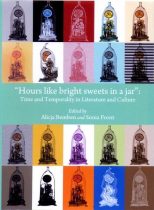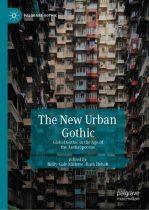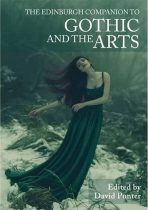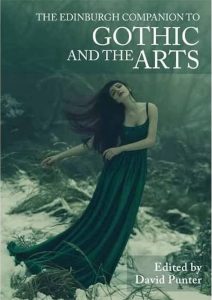2014
 This chapter discusses Bangkok time in line with the studies of city life that draw attention to the everyday experience, urban practices, movement, memory and performing the city, this paper engages in a discussion of temporal cities realized through the symbolic, ritualistic performance of their inhabitants and manifestations of collective memory on the example of Bangkok, a mega-metropolis known for its rather precarious relationship with reality. Though all four of Pile’s phantasmagorias can be successfully applied to a reimagining of Bangkok, this chapter will focus on the two most obvious categories – ghosts and magic, exploring their connection to the city’s past and present and the lingering temporalities they leave behind.
This chapter discusses Bangkok time in line with the studies of city life that draw attention to the everyday experience, urban practices, movement, memory and performing the city, this paper engages in a discussion of temporal cities realized through the symbolic, ritualistic performance of their inhabitants and manifestations of collective memory on the example of Bangkok, a mega-metropolis known for its rather precarious relationship with reality. Though all four of Pile’s phantasmagorias can be successfully applied to a reimagining of Bangkok, this chapter will focus on the two most obvious categories – ghosts and magic, exploring their connection to the city’s past and present and the lingering temporalities they leave behind.



 The chapter looks at three distinct themes in what we could loosely term Asian ‘apartment horror’ films that are characteristic of the specific sociocultural contexts and urban cultural economies they represent: (1) the portrayal of the contiguous community where ghosts co-habit the space alongside the living; (2) the alienating character of modern urban communal lifestyles, where ghosts are more visible than the living, and the biggest fear of both groups is that of loneliness and isolation; and finally (3) the placement of the ghost as a representation of a failed dream of economic success that continues to drive the migration of Asian rural populations to the cities.
The chapter looks at three distinct themes in what we could loosely term Asian ‘apartment horror’ films that are characteristic of the specific sociocultural contexts and urban cultural economies they represent: (1) the portrayal of the contiguous community where ghosts co-habit the space alongside the living; (2) the alienating character of modern urban communal lifestyles, where ghosts are more visible than the living, and the biggest fear of both groups is that of loneliness and isolation; and finally (3) the placement of the ghost as a representation of a failed dream of economic success that continues to drive the migration of Asian rural populations to the cities.
 Installation art is always simultaneously material and ephemeral, comprised of tangible objects but also of light, sound, or air. Its existence is always temporary; it is overshadowed by its own death, ready to be dismantled and moved to the afterlife of a photographic or video record. In this sense, it exists predominantly as its own memory. This semi-spectral nature of installation art, seen as a temporary assemblage of parts always on a verge of collapse and disintegration, makes it particularly open to Gothic influences realised trough a choice of themes or conceptualisation of time and space. Although Gothic has never been specifically defined in the context of art, the visual nature of the Gothic aesthetics makes the two compatible. This chapter highlights the work of several twentieth and twenty-first century artists to examine different ways installation art engages with the Gothic. The discussion focuses on the formal qualities of Gothic installations, particularly the construction of Gothic objects and bodies through the use of forms and media that can be seen as impure or abject, and the way these installations evoke the fragmented, oppressive, and disassociated spaces of Gothic and embrace the temporality directed towards memory, history, impermanence, death, and haunting.
Installation art is always simultaneously material and ephemeral, comprised of tangible objects but also of light, sound, or air. Its existence is always temporary; it is overshadowed by its own death, ready to be dismantled and moved to the afterlife of a photographic or video record. In this sense, it exists predominantly as its own memory. This semi-spectral nature of installation art, seen as a temporary assemblage of parts always on a verge of collapse and disintegration, makes it particularly open to Gothic influences realised trough a choice of themes or conceptualisation of time and space. Although Gothic has never been specifically defined in the context of art, the visual nature of the Gothic aesthetics makes the two compatible. This chapter highlights the work of several twentieth and twenty-first century artists to examine different ways installation art engages with the Gothic. The discussion focuses on the formal qualities of Gothic installations, particularly the construction of Gothic objects and bodies through the use of forms and media that can be seen as impure or abject, and the way these installations evoke the fragmented, oppressive, and disassociated spaces of Gothic and embrace the temporality directed towards memory, history, impermanence, death, and haunting.